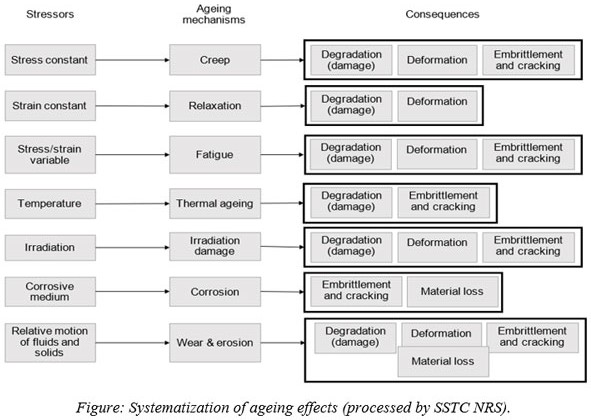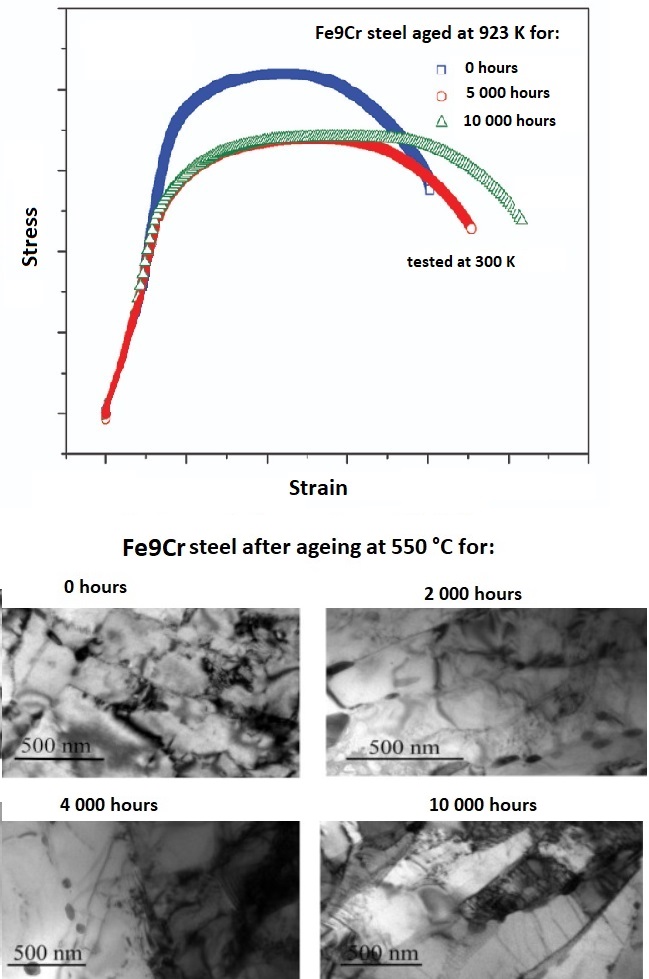From the point of view of technical and nuclear safety and the possible
consequences of an emergency, it is necessary to have a knowledge of the state
of the entire primary circuit, i.e., about all equipment and pipeline systems
during the designed life and beyond - during Long-Term Operation (LTO).
The reactor including the reactor cover is the most critical component
in Nuclear Power Plant (NPP) from the point of view of nuclear safety. This component which is
irreplaceable must withstand all degradation mechanisms such as irradiation,
thermal and mechanical stress and corrosion strain. The critical parts here are
weld joints, cladding, nozzles, and sealing surfaces. Further, the steam generator appears as critical equipment from of view
of the effects of the degradation mechanism and operation ageing. The
degradation mechanisms mostly in heat exchange tubes have an influence on
functionality, which is the transport of heat from the primary coolant water to
the secondary circuit. Further critical parts are also the Main circulation
piping - mostly their weld joints and nozzles.
The steam generator, welds and pipping are under certain circumstances replaceable.
However, any repair or replacement of equipment on the primary circuit
represents a huge financial investment by the operator, in the form of downtime
or even the repair costs themselves. In the case of LTO operation, this may
lead to the decision that further operation of the NPP is not economically
advantageous and may lead to the shutdown of the NPP. Therefore, it is
necessary to know well the ageing processes of materials during operation on
the entire primary circuit.
Factors, that have an influence on the safe operation of NPPs, are the
level of operation management, personnel qualifications, compliance with
operating regulations and especially the state of knowledge about the operated
equipment and the effect of degradation mechanisms on it. Knowledge of the
operated equipment state is determined by several factors:
a) Knowledge of degradation mechanisms acting on the material and
components.
b) Knowledge of the effects on the ageing of materials and components
under operating conditions.
c) Level and scope of maintenance activities.
d) Level and scope of in-service inspections.
Knowledge of the effects of degradation mechanism and ageing effects
during normal operating conditions is the most important factor for correct
lifetime assessment of structure, construction and component. For this, it is
necessary to know the operating conditions and properly monitor them for any
changes.
During the identification of critical components of the VVER, we are
focused on two views: i) the increase of the safety operation at extended
lifetime due to the in-time prediction of the potential failure and recommended
construction, material, and maintenance optimisation, and ii) to the
investigation of available materials (steam generator tubes, primary pipes)
from decommissioned nuclear power plants or from material archives of the DELISA-LTO
project partners.













